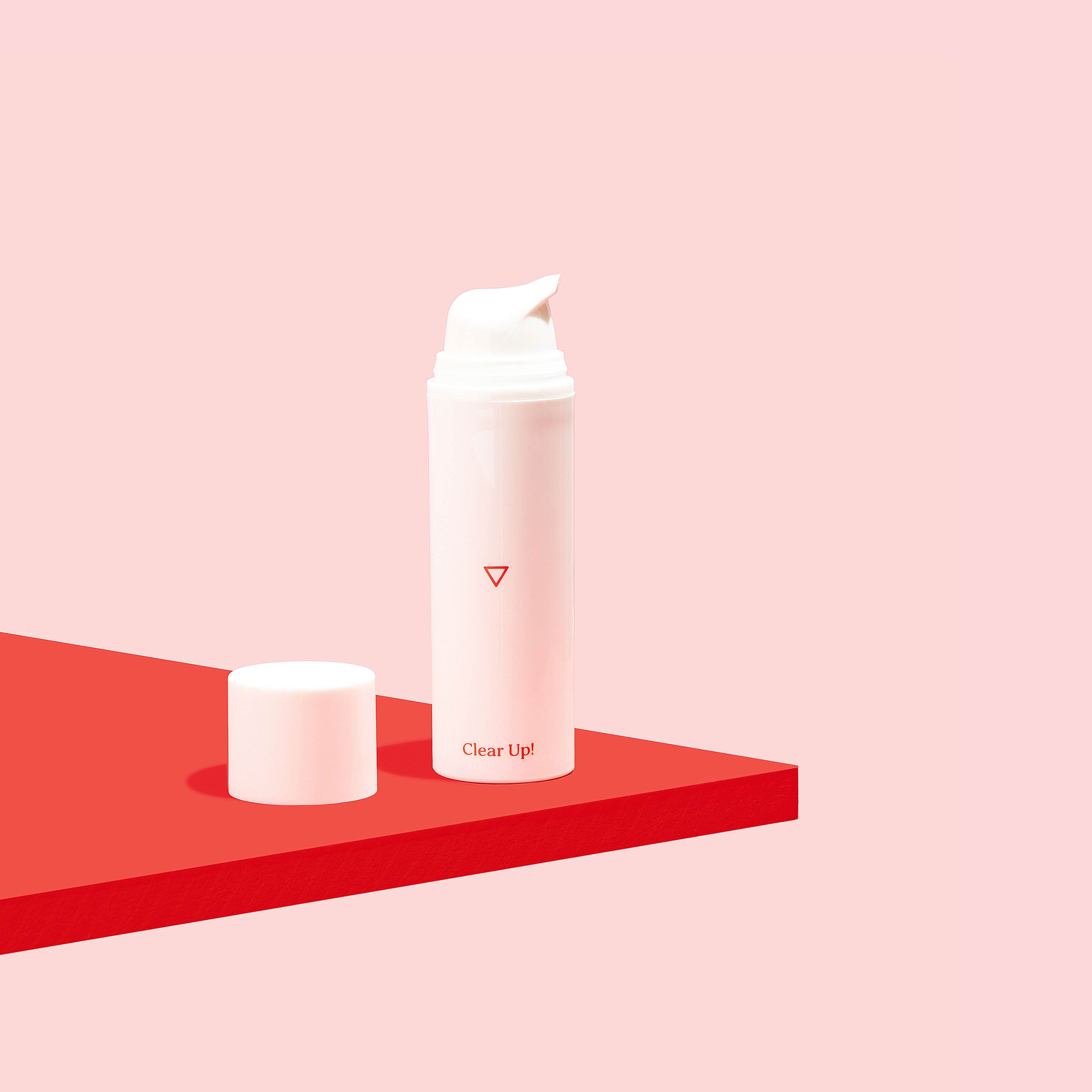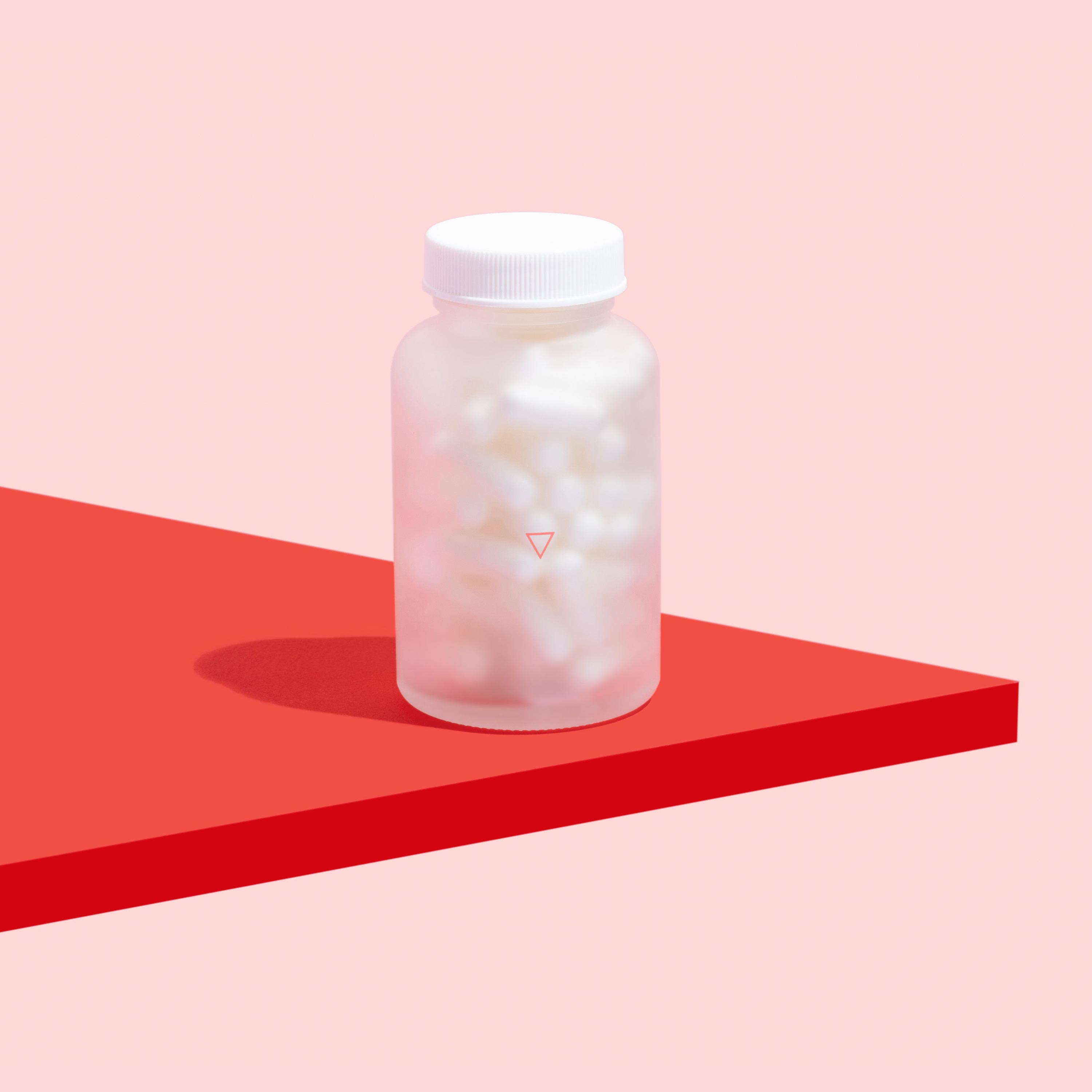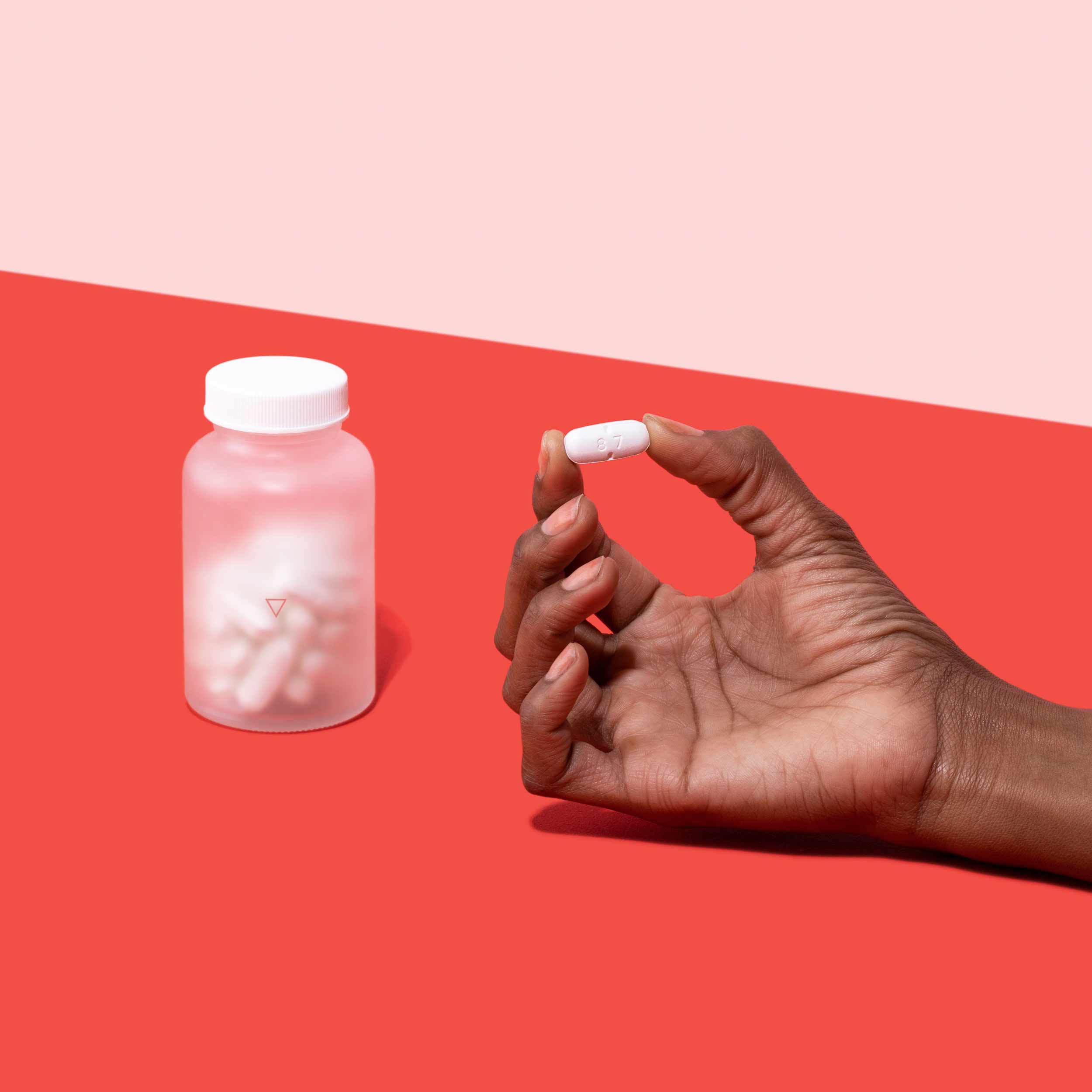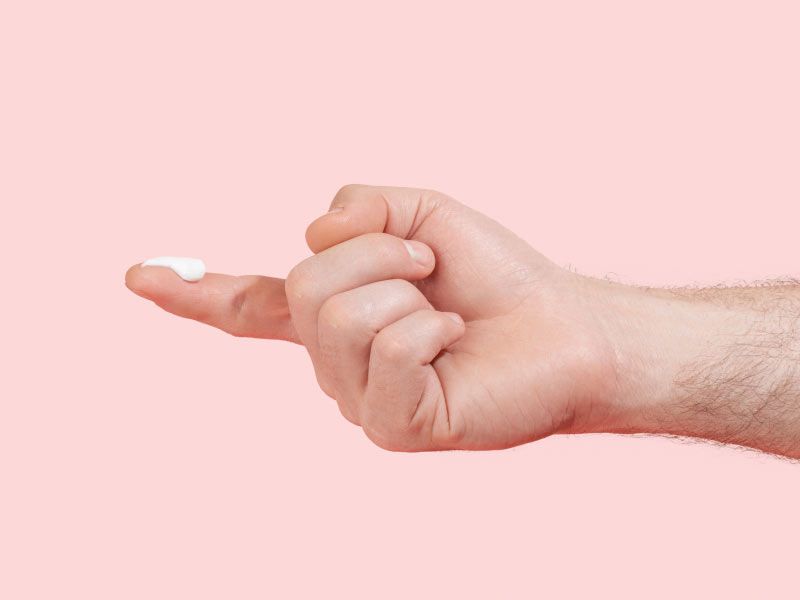
Can I Use Hydrocolloid
Patches on Herpes?
Published on October 18, 2024
Updated on August 26, 2025
Written by Kathleen Morrison
Medically Reviewed by Andrea Sleeth WHNP-BC, MSCP
Hydrocolloid bandages, aka pimple patches, are ALL the rage right now. You might have spotted people with little star-shaped patches on their faces and wondered what’s going on—they’re rocking hydrocolloid bandages! These handy little patches offer gentle care for all kinds of small skin troubles, from cold sores and genital herpes outbreaks to ingrown hairs, pimples, bug bites, and more.
But what exactly are these bandages, and how do they work? Can you really get a whitehead out with a pimple patch? And what about managing a herpes outbreak? Here’s the lowdown on everything you need to know.
What are pimple patches?
Between 60 and 80 percent of adults in the US have an HSV-1 infection, over 20 percent have HSV-2, and almost everyone deals with acne during their lives. And, flare-ups can be caused by almost anything! Sun exposure, hormonal changes, the common cold, and even stress can trigger an outbreak. If you feel an outbreak coming on, don’t panic—we’ve got just what you need. Our pimple patches are the perfect cold sore or pimple killer.
Although they feel like magic patches, which they kind of are, we’ll explain the science behind them. Pimple patches are made of two layers that protect the sore or spot from infection-causing bacteria. The hydrocolloid is made up of various materials that create a gel-like substance when applied to your skin. This gel then absorbs the secretion coming out of the sore or wound.
Pimple patches are made of three materials:
- Gelatin: The gelatin in pimple patches comes from a collagen protein which encourages blood clotting to speed up the healing process
- Sodium carboxymethyl cellulose: This material causes the bandage to swell and form a gel around the sore to protect it
- Pectin: Pectin creates a structure around the wound which allows for tissue to regrow
How do pimple patches work?
Now that you know what’s inside these little bandages, you might be wondering how they work! Pimple patches work in two main ways.
Create an environment for faster healing: If you’re familiar with cold sores or genital herpes outbreaks, you understand the lifecycle of a flare-up and can feel when one’s on its way. First comes the tingling or itching, then the sore starts forming, then it might start seeping before scabbing over, and finally healing. Complete healing can take between seven and 10 days—and that can feel like ages. Cold sores heal slowly and often get red and irritated before they get better, so that’s where a pimple patch can help!
Protect skin from irritation and bacteria: The barrier created by the pimple patch keeps bacteria from entering and irritating the sore. The bandage protects your open skin from dirt and germs, helps you avoid painful scabbing, flattens bumps, and reduces irritation. Plus, hydrocolloid bandages absorb the fluid from cold sore blisters and pimples, which relieves some of the pressure, discomfort, and pain you often feel when you have a flare-up.
How effective are pimple patches?
While understanding how pimple patches work is interesting, what you might really want to know is how effective they are! We have some good news to share about the effectiveness of pimple patches. One study compared the impact of hydrocolloid bandages and prescription acyclovir cream on cold sore healing time. And the results? Pimple patches help cold sores heal just as quickly as prescription Acyclovir cream!
Besides being proven to help speed up healing, pimple patches also help keep outbreaks from impacting your confidence or self-esteem. These bandages are cute and discreet, and they completely hide your pimple or cold sore from view. Plus, they pair amazingly with prescription antivirals for cold sores or genital herpes, helping to prevent future outbreaks and helping you feel your best again–and fast.
Wisp treatment options are available only after consultation with a licensed medical professional. You should consult with your healthcare provider before starting a new supplement or treatment regimen. Individual results may vary.
Do pimple patches scar pimples or cold sores?
Picking at your skin is never a great idea, whether it happens because of pimples, scabs, cold sores, or another reason. Irritating the skin in this way can lead to scarring and make sores or pimples heal more slowly. Because pimple patches cover up the open skin, they can help reduce the urge to pick at your pimples or cold sores.
The most common kind of scarring from acne happens because the skin’s collagen degrades during the healing process. Increased inflammation and slower healing can make scarring more severe. Pimple patches have been shown to help improve scarring, as they fight inflammation and create a safe environment for the skin to heal.
Other benefits of the hydrocolloid patch include:
- Controlling and absorbing the fluid that often occurs in pimples and herpes outbreaks
- Reducing irritation and redness
- Supporting the creation of collagen and tissue
- Providing a barrier to keep the sore free of dirt and bacteria
The antibacterial properties of hydrocolloid patches make them the ultimate cold sore and pimple killer. On top of that, they help contain the moisture in your skin to keep it moisturized while protecting against irritation. Sounds like a win-win situation. Not only are they promoting faster healing and better scarring for your pimples and cold sores, but they also conceal them!
Can you get a whitehead out with a pimple patch?
So, we know that hydrocolloid bandages are great for helping to heal cold sores and herpes outbreaks, they reduce scarring, and they look good doing it. But, there’s a reason these bandages are called pimple patches—because they can seriously help with pimples!
As mentioned above, hydrocolloid patches absorb the secretion of a wound, be it a pimple or a cold sore, allowing for faster and cleaner healing. They can help reduce acne breakouts by keeping bacteria from entering your skin and speeding up the healing process. The patch absorbs the pus, oil, or fluid from the pimple by turning it into a gel. This gel then creates a moist and clean environment that promotes healing.
Pimple patches can’t actually remove whiteheads or blackheads because the skin isn’t open and broken. But, they can keep you from picking your skin, reduce inflammation, and make the whitehead disappear faster.
Not to mention the color and subtle form of the patches means you can walk around with a concealed pimple that will be less angry by the time you get home! You can also use hydrocolloid bandages on ingrown hairs and bug bites. Let the healing begin!
Some good pimple patch alternatives
Pimple patches are pretty awesome for handling those surface-level pimples and cold sores—but sometimes you want something a little more serious or tailored to sensitive skin. If that sounds like you, a targeted acne cream and oral or topical spironolactone can be solid options to consider.
Acne creams are usually designed to get in there and calm inflamed breakouts, giving your skin some extra TLC beyond what a patch can do. They're a great pick if your skin’s feeling a bit sensitive or if you want to team them up with patches for a double-whammy approach.
For those who know their acne is tied to hormones, oral or topical spironolactone can be a game-changer. Spironolactone works by balancing things out behind the scenes or right on your skin’s surface, helping to ease those stubborn, hormone-driven breakouts.
So, if patches aren’t quite cutting it or you’re ready to level up your acne care, these options can fit right into your routine—no stress, just straightforward care that listens to your skin’s needs.
When to use a patch vs. an acne cream
Think of pimple patches as your go-to for those angry, inflamed pimples that need some gentle handling—especially when there’s fluid or irritation involved. They create a cozy little bubble for your skin to start healing without interference.
Acne cream, though, is like the deep-clean friend your skin calls when breakouts are more stubborn or widespread. It can soothe redness, calm inflammation, and get ahead of pimples before they fully show up.
Want to cover all bases? Using patches and acne cream together can be a smart way to tackle breakouts on different levels—spot soothing and deeper care, all in one simple routine.
Taking care of your skin, your way
Pimple patches have become a go-to for tackling pimples and cold sores—they’re simple, discreet, and do a solid job soothing, healing, and hiding those pesky spots. But sometimes, your skin might need something a little different—especially if you’re dealing with sensitive skin or stubborn breakouts that want to stick around.
That’s when medicated options like acne creams and hormone-balancing treatments can step in. These work behind the scenes to calm irritation and support clearer skin over time, giving you more control and confidence in your routine.
Whether you’re team patch, team cream, or a mix of both, what really matters is finding what feels right for your skin and your lifestyle. Your skin deserves care that listens to it—and helps you feel your best every day.
If you’re thinking about trying something beyond patches, Wisp offers a range of acne-fighting options designed with your unique needs in mind.
This blog post is for informational and educational purposes only and should not be taken as professional advice. Always consult with a qualified professional before making any decisions based on the information provided here.
Frequently Asked Questions (FAQ):

Clear Up! Prescription Acne Cream (Clindamycin + Retin A)
Starting at $75
Tretinoin 0.04%, Clindamycin 1.25%, Niacinamide 4% Prescription treatment for inflamed and stubborn acne.

Oral Herpes | Outbreak & Preventative Treatment for HSV-1 & HSV-2
Starting at $10/ month
Prescription antivirals for oral (cold sore) herpes outbreaks and prevention.

Genital Herpes | Outbreak & Preventative Treatment for HSV-1 & HSV-2
Starting at $10/ month
Prescription antivirals for genital herpes outbreaks and prevention.

Preventative Treatment for HSV-1 & HSV-2
Starting at $10/ month
Prescription antivirals for oral (cold sore) and genital herpes prevention.


